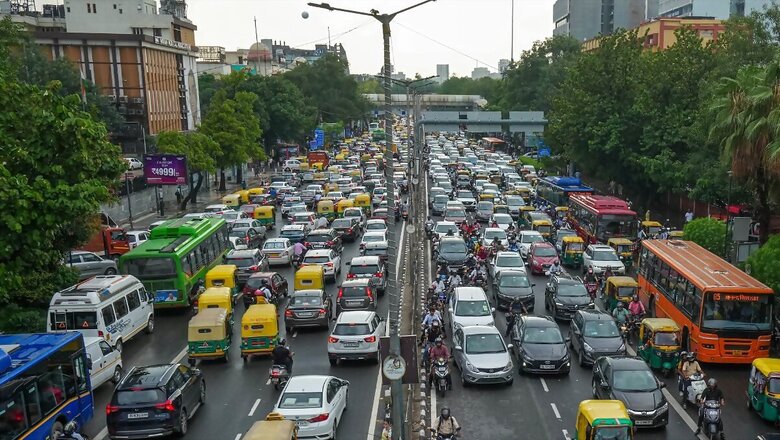
views
From detecting triple riding to those using cellphone while driving, from overage vehicles plying in the city to those without a valid PUCC, the Delhi government is planning to install Artificial Intelligence-based cameras to detect traffic violations to strengthen enforcement and ramp up road safety, officials said.
The entire project of installing Automatic Number Plate Recognition (ANPR)-based violation detection cameras is estimated to be done at a cost of Rs 20 crore and the Transport Department of the Delhi government has floated a tender for procuring such cameras and the supporting technology.
In order to improve the road safety on the streets, the department has taken an initiative to deploy Integrated Traffic Enforcement Management System (ITMS) across Delhi which will help it reduce the number of accidents and related fatalities with the help of advanced AI-based video analytics technology-based solution, an official said.
“The objective of the ITMS is to reduce the number of drivers who violate traffic rules, penalise the offenders, and run road safety awareness initiatives across the junctions thereby making the roads of Delhi safer for both pedestrians and motorists,” he explained.
The ANPR technology is a key aspect of the ITMS, the official said.
“The system shall allow the operator to set traffic rules such as no heavy vehicles during certain times of the day for selected traffic junctions/cameras. The system shall identify the heavy vehicles and generate an alert in case the vehicle is violating the rule within the configured time,” an official explained.
The system shall keep track of the violation history for each vehicle and generate reports as needed.
According to the official, the major violations in the capital are speed violation, riding without helmet, triple riding, driving without seat belt, driving while on phone call and uncovered good carriage, overloading in case of commericial vehicles.
Driving in the wrong lane, buses not moving in designated lanes, private vehicles parked on roads are among the other issues.
“There are also instances of de-registered End of Life Vehicles being parked in public spaces or being driven on roads or vehicles without a valid PUCC being driven on roads. Then there are also violations that happen when Odd-Even scheme or GRAP Stage III or GRAP Stage IV restrictions are in place,” he added.
The ITMS shall provide various traffic violation detection use cases using AI and deep learning-based technology, he added.
“It shall provide insights for the traffic planners using innovative dashboards for various parameters such as violations, traffic count, vehicle classification, present and historical trends, comparison of roads or junctions,” he explained.
Highlighting the effectiveness of the ITMS, he said it shall serve as a decision support system and provide actionable intelligence to help make the city roads safer and less congested for both motorists and pedestrians.
Explaining how the ANPR software system will work, he said it shall capture the licence plates of vehicles and the vehicle categories such as cars, heavy commercial vehicles, three-wheelers, two-wheelers, and buses.
“The system shall store the licence plate and vehicle category information for each transaction in the system database. The ITMS shall categorise licence plates into ‘good’ (readable), ‘bad/dilapidated’ (partial or fully non-readable), ‘broken’, licence plates without numbers,” he explained.
The system shall use image processing algorithms to identify licence plates and convert them into a text string for four-wheelers and other vehicles with a minimum detection accuracy of 95 per cent and a minimum conversion accuracy of 90 per cent.
The ITMS shall provide a dashboard that allows users to view captured vehicles categorized as private, commercial, electric, and other special vehicles such as military by integrating with VAHAN database.
“The dashboard shall have various filters that allow users to search for vehicles by date, time, location, vehicle category, and license plate category. The ITMS shall use training datasets to recognize special categories of vehicles such as military vehicles,” he elaborated.
The ITMS shall have an automated violation detection and ticket generation process based on the ANPR conversion and violation detection confidence level.
“The confidence level threshold for pushing violations to ticket generation shall be configurable by the user. The system shall be flexible to capture the licence plates and the traffic violations from front-side and back-side of the vehicle, subject to the required field of view, using a single camera for two lanes at least,” he said.
According to official documents, the system shall allow the operator to set the effective timing of various applications such as red light violation, speed detection, and ANPR during the day.

















Comments
0 comment